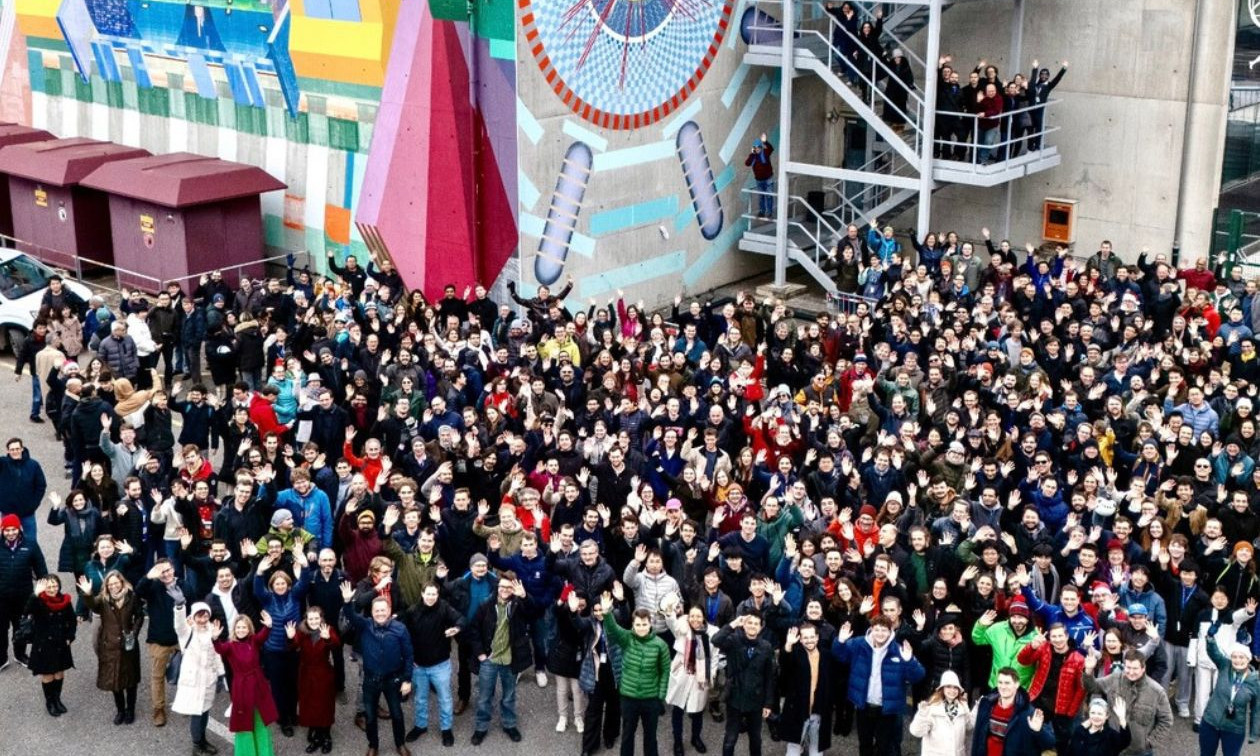In two places at once

Anyone with a high-school diploma knows about Newton's law of universal gravitation: it's that the gravitation force behaves like 1 over the distance squared as you separate from a gravitating mass. And these days most everybody has also heard of quantum mechanics, thanks to the advent of quantum computing, which even Canada's prime minister is able to explain.
The fascinating behaviour of quantum systems is that they can basically allow something to be in two (or more) states at the same time. A massive particle, for instance, can be put in two places simultaneously. This is not science fiction: atom interferometers routinely put single atoms of caesium or rubidium into configurations where the single atom quantum state is split between two places separated by as much as several centimetres.
Such states are very sensitive to gravitation, giving rise to the most precise measurement scientists have been able to make of the earth's gravitational field, one part in 10^15, for instance. But what gravitational field does a massive particle create in such a quantum state?
To find out, Université de Montréal particle physicists Richard MacKenzie and Manu Paranjape have been working since 2012 with their colleague Urjit Yajnik at the Indian Institute of Technology Bombay, in Mumbai, India, supported by a Cooperation Québec-Maharashtra grant of Quebec's Ministère des relations internationales et de la Francophonie.
Along with many students and other collaborators, they have produced a large body of research in theoretical particle physics, and their most recent study, just published in Physical Review Letters , the journal of the American Physical Society, asks the question: "What is the gravitational field of a mass in a spatially non-local quantum superposition?" Their surprising finding: seeming not to know that a massive particle is split between two places at the same time, the gravitational field appears to be emanating from only one place, given the average position of the massive particle.
To reach that conclusion, the scientists thought about scattering experiments by other particle physicists, for example in the Large Hadron Collider, that over the last century have probed the interior of atoms, nuclei and other sub-atomic particles. The deep inelastic scattering experiments done in the late 1970s also demonstrated the existence of quarks inside the nucleus and confirmed the theory of strong interactions, called quantum chromodynamics.

"It was evident to us that we should calculate the behaviour of the gravitational scattering of other particles from the spatially non-local massive particle," said Paranjape. "This calculation would probe the nature of the gravitational field created by the non-local massive particle. Doing so, we showed indisputably that the scattering behaves as if the massive particle is in its average position and that it does not behave as if there is half a particle at each of the two distinct spatial positions. This result was actually quite unexpected."
Now comes the hard work: experimental verification of their scientists theoretical calculations.

"For now, the gravitational field of a single atom is far too weak to be experimentally observed, even with the most sensitive detectors of gravitational fields, the atom interferometers," said MacKenzie. "But it is in the realm of possibility to measure the gravitational field of a collection of about a billion atoms."
This number of atoms, although much less than a microgram of matter, is about the number of atoms that participate in the macroscopic quantum state corresponding to a so-called Bose-Einstein condensate. A spatially non-local superposition of a Bose-Einstein condensate of this size could be constructed, and it would give rise to measurable gravitational fields.
If the scientists' theory could be verified experimentally, "the results would be spectacular," said Paranjape. Stay tuned ... wherever you happen to be.



